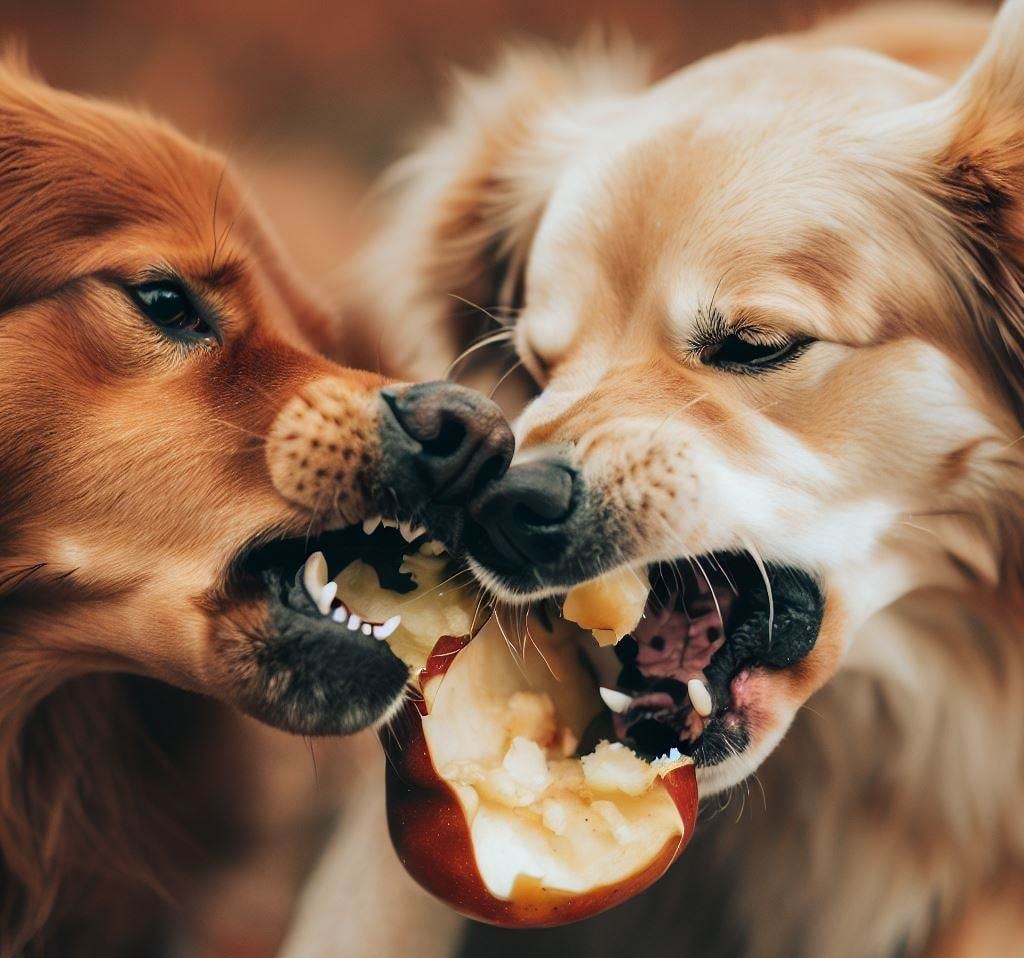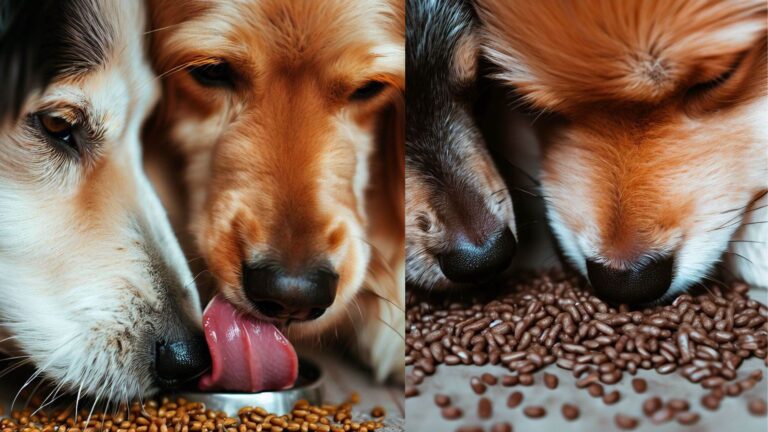As a pet owner, it’s natural to want to share your favorite foods with your furry friend. While dogs are primarily carnivorous, they can enjoy some fruits and vegetables as part of a balanced diet. Apples are one such fruit that dogs can consume safely.
However, when it comes to apple cores, there are some factors to consider before giving them to your canine companion. In this blog post, we will delve into whether dogs can eat apple cores and explore the potential risks and benefits associated with this practice.
Table of Contents
Nutritional Value of Apples
Before discussing apple cores, it’s important to understand the nutritional value of apples themselves. Apples are a good source of vitamins A and C, dietary fiber, and antioxidants.
They offer numerous health benefits for dogs, including promoting healthy digestion, improving dental hygiene, and providing a refreshing treat. Moderation is key when feeding your dog apples, as excessive consumption may cause digestive issues due to their natural sugar content.

Can Dogs Eat Apple Cores?
While the flesh of an apple is generally safe for dogs, apple cores should be avoided due to the presence of seeds and the potential risks they pose.
Dangers of Apple Cores
Apple cores pose potential risks. The core of an apple contains several components that can be harmful to your canine companion.
The main concern is the presence of seeds containing a compound called amygdalin. When ingested, amygdalin can release cyanide, a toxic substance that can be harmful in large amounts.
Additionally, apple cores are hard and can present a choking hazard. Dogs that swallow large pieces of apple cores may experience blockages in their digestive system, which can require medical intervention.
Risks and Precautions
- Cyanide Poisoning: While apple seeds contain amygdalin, the amount is generally small and unlikely to cause cyanide poisoning in dogs unless consumed in large quantities. However, it is best to avoid giving your dog apple cores altogether to minimize any potential risk.
- Choking Hazard: Apple cores can be tough for dogs to chew properly. Small pieces can easily break off and pose a choking hazard. If your dog tends to gulp food without chewing thoroughly, removing the core is best.
- Digestive Issues: Dogs have sensitive digestive systems, and consuming large amounts of apple cores can lead to gastrointestinal distress, including stomachaches, diarrhea, or constipation. Removing the core ensures your dog avoids any potential digestive upsets.
Alternative Ways to Share Apples with Your Dog
While apple cores should be avoided, there are safer ways to incorporate apples into your dog’s diet:
- Remove the Core: Before offering your dog an apple slice, remove the core, including the seeds and stem. This ensures your dog enjoys the fruit without any potential risks.
- Small Portions: Dogs should consume apples in moderation. Offer small, properly sliced pieces as a treat, or mix them into your dog’s regular food as an occasional addition.
- Cooked Apples: Cooking apples can help break down their fibrous texture and make them easier for dogs to digest. Plain, unsweetened applesauce or lightly steamed apple slices can be a healthy and tasty option.
- Frozen Treats: Frozen apple slices can serve as a refreshing treat during hot weather. Ensure the slices are seedless and properly portioned to avoid choking hazards.
Read More: Can Dogs Eat Cherry Tomatoes?
FAQs

Can a small amount of apple seeds harm my dog?
In most cases, a small amount of apple seeds is unlikely to cause harm. However, avoiding feeding apple cores is best to minimize any potential risk.
How much apple core is too much for a dog?
It is recommended to completely remove the apple core, including the seeds and stem, before feeding apples to your dog. It’s best to err on the side of caution and not give them any apple cores.
Can cyanide from apple seeds poison a dog?
While apple seeds contain amygdalin, which can release cyanide, it is unlikely to poison a dog unless consumed in large quantities. However, it’s best to avoid feeding apple cores altogether to be safe.
What should I do if my dog accidentally ate an apple core?
If your dog ingests a small amount of apple core, monitor them for any signs of distress, such as vomiting, diarrhea, or difficulty breathing. Contact your veterinarian if you notice any concerning symptoms.
Are there any safe parts of an apple core for dogs to eat?
It’s best to remove the entire core, including the seeds and stem, before offering apples to your dog. The flesh of the apple, without the core, is safe for consumption.
Can cooked apple cores be given to dogs?
Cooked apple cores are not recommended for dogs. Removing the core completely is best to ensure your dog’s safety and avoid any potential health issues.
What are alternative ways to share apples with my dog?
You can remove the core and seeds, then slice or dice the apple into small, manageable pieces for your dog. You can also offer cooked or frozen apples as treats.
Are there any other fruits or vegetables that dogs should avoid?
While many fruits and vegetables are safe for dogs, some should be avoided, such as grapes, raisins, onions, garlic, and avocados. Always research before introducing any new food into your dog’s diet.
Conclusion
While dogs can enjoy the many health benefits of apples, it is important to avoid giving them apple cores due to potential risks. The seeds in apple cores contain amygdalin, which can release cyanide when ingested in large quantities.
Additionally, apple cores can present a choking hazard and may cause digestive issues. As a responsible pet owner, removing the core and seeds before sharing apples with your furry friend is best.






